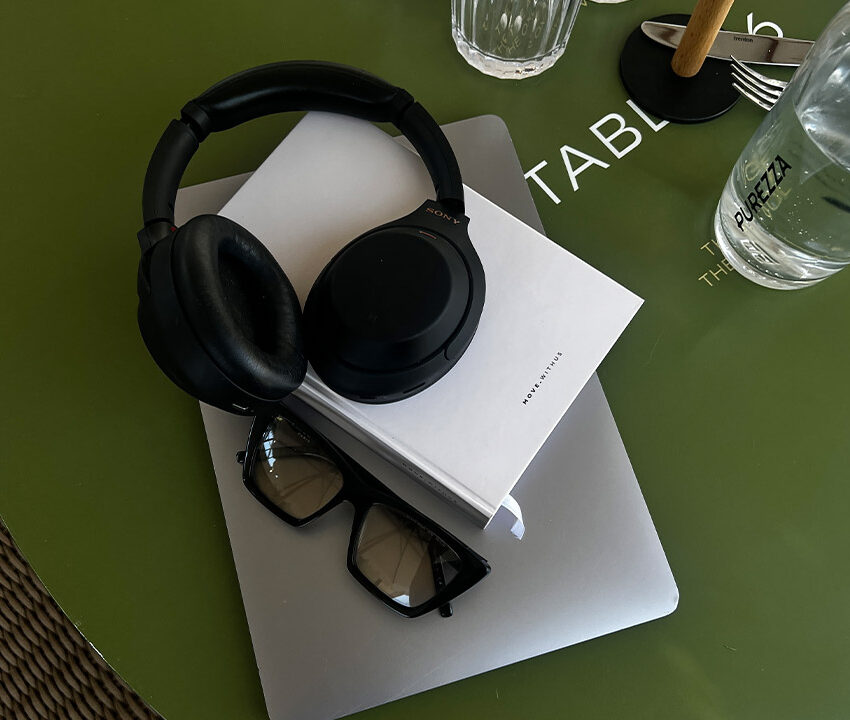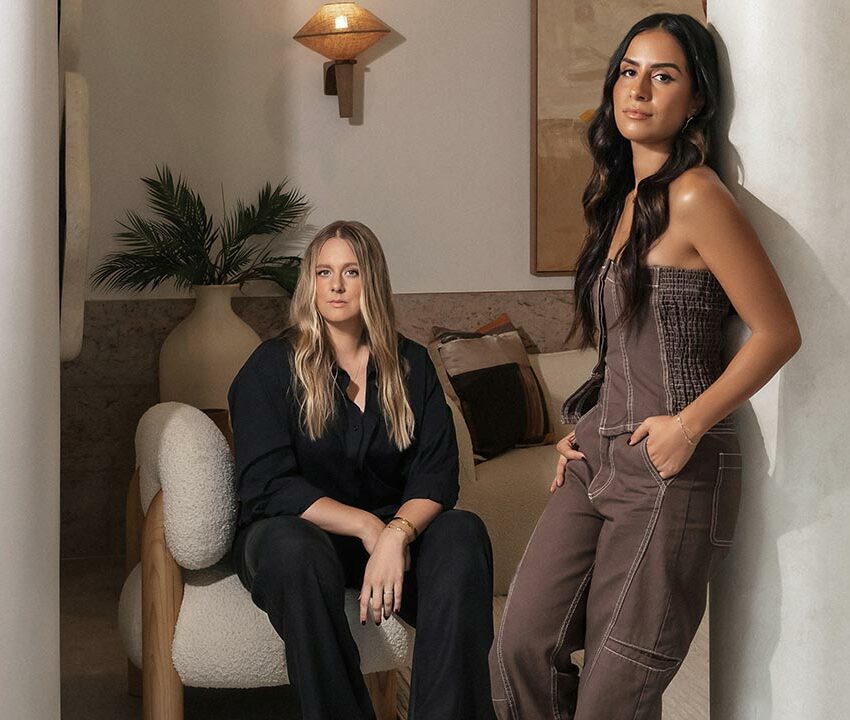
Behind the Music: Laneway Festival’s Vibe
BIGGER, BOLDER, LOUDER
As St. Jerome’s Laneway Festival celebrates its 21st birthday this year, we speak to Head of Programming Travis Banko and Festival Director Jessie Parker to answer our burning questions.
Travis Banko – Head of Programming, Laneway Festival

Laneway has a reputation for being ahead of the curve with artists. What’s the secret to staying so in tune with who’s rising and who the audience wants to see?
It’s just about being curious and constantly listening. Our team spends a lot of time at shows, along with talking with artists, managers, and agents around the world. You start to get a sense for when something is connecting on a deeper level, not just online, but in how fans respond in real life. Laneway has always been about that sweet spot: a mix of established headliners and artists on the brink of breaking through, where you can still feel the energy of discovery in the crowd.
What actually goes into booking a huge international headliner like Chappell Roan?
A lot of groundwork, patience, and timing. For artists at that level, you’re working around world tours, album cycles, and label plans, so it’s about aligning a moment that makes sense for everyone. We were actually in discussions with Chappell’s team for Laneway 2025 as well, so when that didn’t happen, making Laneway 2026 our number one priority became really clear. There’s also a huge amount of relationship work behind the scenes; we’ve built trust with agents and managers globally, so they know Laneway delivers. When it all comes together, it’s incredibly rewarding.
How far in advance do you typically start locking in artists?
We start conversations 12-18 months out, sometimes even longer for major headliners. For emerging acts, it can be much closer. Sometimes we lock in artists just three or four weeks before the announcement, right as they’re starting to really pop. It’s a balance between planning and leaving space for those new names that break later in the year, and those are often the most exciting bookings. A good example is Geese, who absolutely exploded between the time we booked them and their album coming out. Moments like that make the early bets feel really worthwhile.
When an artist has to pull out of a lineup, how do you go about securing a replacement?
It really depends on how close to the announcement we are, or if the lineup has already been made public. You’re mainly juggling budgets and who’s actually available at short notice, but also trying to find someone who genuinely feels like they belong in that slot. We keep an active list of artists we love, and who are touring around the same time, so when something falls through, we can move quickly. At the end of the day, it’s about maintaining the flow and integrity of the lineup; fans can always feel when the energy is right. If the response online is mostly positive about who steps in, that’s usually a sign we’ve done our job well, even though it can be a tricky process.
Looking back over 21 years, which Laneway performances do you think will go down in history as all-time greats?
There are so many, but a few that always come up are Lorde’s early set and Tame Impala in full flight when they headlined in 2017. When Laneway had Florence + The Machine in 2010, and Foals in 2011, those were real personal highlights. Charli XCX’s first time at Laneway in 2020 was also unforgettable; she not only played the main festival but did tiny after-party shows at places like The Night Cat (Melbourne) and Oxford Art Factory (Sydney), which felt electric. Artists like Billie Eilish, alt-J, Fred Again.., and Raye, who we booked right as they were exploding, make the job so fun. You can feel those “before it all changes” moments in real time, that’s what makes Laneway special! And then there are the cult sets like Phoebe Bridgers, Fontaines D.C., Mac DeMarco, and King Gizzard, where the crowd just completely takes over. Those moments become part of Laneway history.
What’s been the biggest booking risk you’ve taken – and did it pay off?
Booking an act before the rest of the world catches on is always a risk. We’ve had years where artists were unknown at announcement and ended up as some of the most popular on the lineup by the time the festival happened. That’s the thrill of Laneway, backing your gut. Sometimes it’s a leap, but when you get it right and see tens of thousands of people singing along a year later, it’s worth all the hard work that goes into it.
Are there any dream artists or collaborations still on your bucket list?
Always. We’ve been lucky to work with so many artists we admire, but there are still a few big dream bookings. Most of them I won’t go into; I can’t give away all the trade secrets, but I’ll happily say that Tame Impala is welcome back to headline any time they like.
If you could relive any Laneway festival from the last 21 years, which year would you choose, and why?
Probably one of the early 2010s runs, around the time of The xx, Alt-J, Florence, Foals, and Flume all emerging. There was this incredible feeling that something was shifting, that new sounds were coming through, and fans were discovering them together. That’s always been the magic of Laneway: you walk in not knowing every name on the poster, and you walk out with your new favourite artist. Of course, Laneway 2025 was also a standout; Charli XCX headlining our biggest shows yet was a real milestone for the festival. And 2026 with Chappell Roan is going to be something else entirely… I’ll be right up the front singing every word!
Jessie Parker – Festival Director, Laneway Festival
What are some things most people don’t realise about putting on a festival of this scale?
It’s a year-round operation with a surprisingly lean team! We plan extensively to ensure that not only are our sites safe, functional, and welcoming, but also that they look amazing and provide a heightened festival experience. From the moment we release the festival lineup, we’re thinking about the fans’ experience, and that requires a lot of thought, a lot of expertise, and a lot of hard work from our incredibly passionate and dedicated team.
What’s been the most unexpected logistical challenge you’ve ever faced?
In 2023, two days prior to our Auckland event, a cyclone hit and a state of emergency was declared. The creek next to our site burst its banks, and we then had to evacuate through shin-deep contaminated water. We set up a makeshift office under an awning to liaise with key stakeholders and our insurer, and unfortunately had to make the call to cancel the event. Between drafting communications to artists (many of whom were en route from overseas), suppliers, patrons, and our core team, kick-starting the ticket refund process, and ensuring we could all get out of there safely and onto the next show in Brisbane two days later was a serious logistical feat! You can do all the planning in the world, but sometimes Mother Nature decides it’s just not going to happen!
How has the festival evolved since those original laneway block party days?
It’s not the most glamorous side of events, but it is a crucial aspect – and that’s safety and risk planning. It’s evolved exponentially since those early days, and there are some incredible technologies and resources that we utilise to design and manage our sites. This helps us to understand and plan for crowd movements and ensures we’re catering to the evolving needs of our audiences.
How do you see the festival evolving as the music industry and audience expectations shift?
Staying connected to our audience is crucial to ensure we continue to remain relevant and deliver an experience that people want to come to. That stems from the programming, which is often booked a year or more ahead of the event, and then flows on into our broader festival design. This is everything from onsite experience to sustainability initiatives, to how we communicate and engage online. We’re always listening and learning, not just from our audience, but from what’s happening globally in music and live events. As genres evolve and new platforms shape the way people discover artists, we want to be agile enough to reflect that in our lineups and formats. We’ve also seen growing demand for more inclusive, immersive, and meaningful experiences, so we’re investing in spaces that go beyond music, where people can connect, recharge, and explore new ideas.
What keeps Laneway distinct from other festivals in Australia and beyond?
We focus a lot on telling a story through our events – every element is carefully curated, and we never want to lose sight of what makes a festival unique and special, which, to us, is building strong communities and bringing people together to share in the joy that live music offers. Ultimately, we want to remain open to change while staying true to the spirit of the festival. We’re not afraid to experiment, and we see every edition as a chance to refine what we do and reimagine what a festival can be.
Are there any exciting additions or surprises planned to mark the 21st anniversary?
We’re always looking for ways to make the festival experience even better for fans, and we’re incredibly excited to celebrate 21 years – you’ll just have to wait and see what’s coming!







